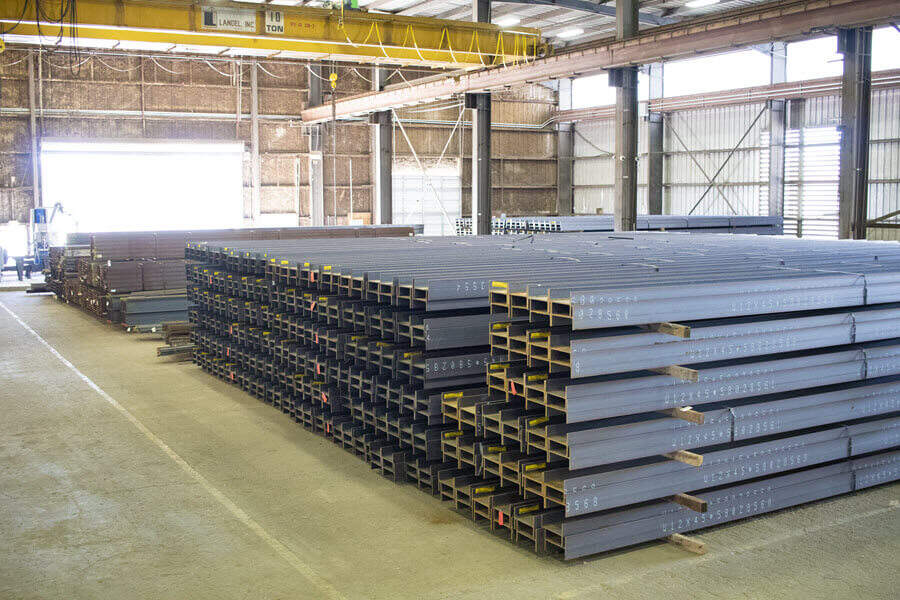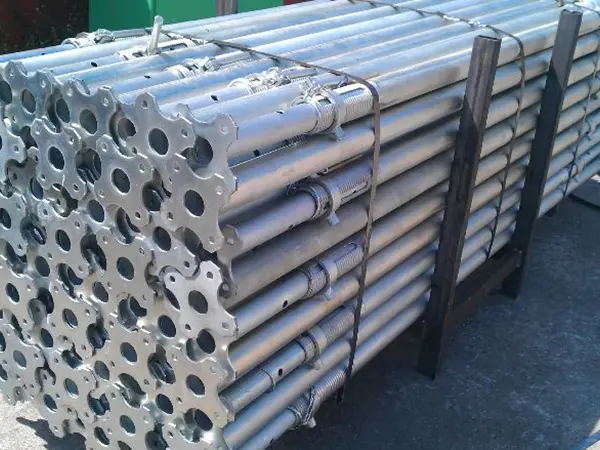When selecting structural steel components for construction projects, understanding the fundamental differences between H-beams and I-beams becomes crucial for engineers, architects, and construction professionals. Both beam types serve essential roles in modern building construction, yet their distinct characteristics, applications, and performance metrics make them suitable for different structural requirements. This comprehensive analysis explores the technical specifications, manufacturing processes, and practical applications that distinguish these two vital structural elements in contemporary construction practices.
Structural Design and Geometric Characteristics
Cross-Sectional Profile Analysis
The primary distinction between H-beams and I-beams lies in their cross-sectional geometry, which fundamentally affects their structural performance and load-bearing capabilities. H-beams feature flanges that extend equally on both sides of the web, creating a symmetrical profile that resembles the letter H when viewed from the end. This symmetrical design provides uniform load distribution and enhanced stability under various loading conditions. The flange width typically matches or exceeds the beam height, resulting in a more compact structural profile.
I-beams, conversely, exhibit a cross-sectional profile that mirrors the letter I, with narrower flanges relative to the web height. The flanges are typically thinner and may taper toward the edges, creating a more elongated vertical profile. This configuration optimizes the beam for resisting bending moments while minimizing material usage. The web-to-flange ratio in I-beams is generally higher than in H-beams, making them particularly effective for spanning longer distances with reduced deflection.
Dimensional Proportions and Standards
Manufacturing standards for H-beams and I-beams follow specific dimensional requirements that reflect their intended applications. H-beams typically maintain flange widths ranging from 100mm to 900mm, with corresponding heights that create nearly square or rectangular overall profiles. The flange thickness remains relatively constant across the width, providing consistent structural properties throughout the cross-section. Standard H-beam designations include HE-A, HE-B, and HE-M series, each optimized for specific structural requirements.
I-beam dimensions follow established standards such as American Wide Flange (W) shapes or European IPE profiles. These beams feature height-to-width ratios that typically exceed 1.5:1, with flange widths ranging from 80mm to 400mm for standard sections. The variable flange thickness, often tapering from root to tip, optimizes material distribution for maximum structural efficiency. This geometric optimization allows I-beams to achieve superior strength-to-weight ratios compared to H-beams in many applications.
Manufacturing Processes and Material Properties
Production Methods and Quality Control
The manufacturing processes for these structural elements differ significantly, impacting their material properties, surface finish, and dimensional accuracy. H-beams are typically produced through hot rolling processes, where heated steel billets are passed through a series of forming rolls that gradually shape the cross-section. This method ensures consistent material properties throughout the beam length and provides excellent surface finish. The hot rolling process also allows for precise control of dimensional tolerances, making H-beams particularly suitable for applications requiring tight fitting tolerances.
I-beam production often involves either hot rolling or welded fabrication methods, depending on the size and application requirements. Smaller I-beams are frequently hot-rolled using methods similar to H-beam production, while larger sections may be fabricated by welding separate flange and web plates together. This welded construction method allows for greater flexibility in dimensional customization but requires additional quality control measures to ensure weld integrity and dimensional accuracy. The choice of production method significantly influences the final cost, lead time, and performance characteristics of the finished product.
Material Specifications and Grades
Both beam types utilize similar steel grades, typically ranging from S235 to S355 according to European standards, or ASTM A992 for American specifications. However, the manufacturing process can influence the final material properties achieved in the finished product. Hot-rolled H-beams often exhibit more uniform mechanical properties throughout the cross-section due to the consistent thermal treatment during forming. The rolling process also tends to align the steel grain structure with the beam length, potentially improving fatigue resistance under cyclic loading conditions.
Welded I-beams may exhibit slight variations in material properties at the weld zones, where heat-affected zones can alter the local steel microstructure. However, modern welding processes and post-weld heat treatment can minimize these effects, ensuring that welded beams meet or exceed the specified material requirements. The choice between rolled and welded construction often depends on project-specific requirements for strength, durability, and cost-effectiveness.
Load-Bearing Characteristics and Structural Performance
Moment Resistance and Flexural Strength
The geometric differences between H-beams and I-beams result in distinct structural performance characteristics under various loading conditions. H-beams, with their wider flanges and more compact profile, excel in applications requiring high lateral-torsional buckling resistance. The increased flange width provides greater lateral stability, making H-beams particularly effective as columns or in applications where lateral bracing is limited. The symmetrical cross-section also ensures consistent performance regardless of the loading direction.
I-beams optimize their cross-sectional properties for maximum flexural strength with minimal material usage. The concentrated material in the flanges, positioned at the maximum distance from the neutral axis, provides superior moment resistance compared to H-beams of similar weight. This efficiency makes I-beams the preferred choice for long-span applications where deflection control is critical. The higher section modulus achieved through the elongated profile allows I-beams to carry greater bending moments while maintaining acceptable stress levels.
Compression and Column Applications
When utilized as compression members or columns, H-beams and I-beams exhibit markedly different performance characteristics. H-beams generally provide superior column performance due to their more favorable radius of gyration about both major axes. The wider flanges increase the moment of inertia about the weak axis, reducing the slenderness ratio and improving the critical buckling load. This makes H-beams particularly suitable for applications where lateral support is minimal or where the column must resist loads from multiple directions.
I-beams, while less efficient as standalone columns due to their weak-axis properties, can be effectively used in braced frame systems where lateral support is provided. The higher strong-axis moment of inertia in I-beams can be advantageous in certain column applications, particularly where the primary loading occurs in a single direction. However, careful consideration of buckling modes and bracing requirements is essential when specifying I-beams for compression applications.

Construction Applications and Industry Usage
Commercial and Industrial Building Systems
The selection between H-beams and I-beams often depends on the specific requirements of the construction project and the structural system being employed. H-beams find extensive use in heavy industrial applications, including manufacturing facilities, warehouses, and infrastructure projects where robust structural performance is paramount. Their superior torsional resistance and lateral stability make them ideal for supporting heavy machinery, crane systems, and equipment that generates dynamic loads. The compact profile also allows for efficient use of available headroom in industrial buildings.
I-beams dominate in commercial construction applications where long spans and efficient material usage are priorities. Office buildings, retail facilities, and residential structures frequently employ I-beams for floor and roof framing systems. The superior span-to-depth ratio achieved with I-beams allows architects greater flexibility in space planning while minimizing structural depth requirements. This characteristic is particularly valuable in multi-story construction where floor-to-floor height optimization is crucial for project economics.
Specialized Construction Sectors
Certain construction sectors have developed preferences for specific beam types based on performance requirements and industry standards. Bridge construction frequently utilizes I-beams for main girders due to their excellent flexural efficiency and ability to span large distances with minimal deflection. The aerodynamic profile of I-beams also reduces wind loading on bridge structures, improving overall stability and reducing foundation requirements.
High-rise construction often employs H-beams for primary structural members, particularly in seismic zones where lateral stability and energy dissipation characteristics are critical. The robust cross-section and superior connection capabilities of H-beams make them well-suited for moment-resisting frame systems that must withstand earthquake forces. The symmetrical profile also simplifies connection design and fabrication, reducing construction complexity and costs.
Economic Considerations and Cost Analysis
Material Costs and Availability
The economic factors influencing beam selection extend beyond initial material costs to encompass fabrication, transportation, and installation expenses. H-beams, due to their hot-rolled production method and standardized sizes, often enjoy better availability and more competitive pricing for common sizes. The manufacturing efficiency achieved through rolling mills allows for cost-effective production of standard sections, making H-beams an economical choice for projects with conventional structural requirements.
I-beams, particularly larger welded sections, may command premium pricing due to the additional fabrication processes required. However, the material efficiency achieved through optimized cross-sectional properties can offset higher unit costs through reduced overall steel tonnage requirements. The total project cost analysis must consider not only the beam cost but also the impact on foundation design, connection requirements, and construction scheduling.
Lifecycle Cost Considerations
Long-term economic performance encompasses maintenance requirements, service life, and potential for future modifications or expansions. H-beams, with their robust cross-sections and excellent corrosion resistance characteristics, often provide superior long-term value in harsh environments or applications with minimal maintenance access. The consistent wall thickness and simplified geometry also facilitate inspection and maintenance activities throughout the structure's service life.
I-beams may offer lifecycle cost advantages in applications where their structural efficiency translates to reduced foundation requirements or simplified construction methods. The potential for longer spans can reduce the number of structural supports required, simplifying building systems and reducing long-term maintenance costs. However, the thinner web sections in some I-beam profiles may require more frequent inspection in corrosive environments or high-stress applications.
FAQ
What are the main visual differences between H-beams and I-beams?
The most obvious visual difference lies in their cross-sectional profiles when viewed from the end. H-beams have wider, more substantial flanges that extend equally on both sides of the web, creating a profile that resembles the letter H. The flanges are typically thicker and maintain consistent thickness throughout their width. I-beams have a more elongated vertical profile with narrower flanges that may taper toward the edges, resembling the letter I. The overall height-to-width ratio is typically greater in I-beams, giving them a more slender appearance.
Which beam type is stronger for spanning long distances?
I-beams generally provide superior performance for long-span applications due to their optimized cross-sectional properties. The concentration of material in the flanges, positioned at the maximum distance from the neutral axis, provides higher section modulus and moment of inertia values compared to H-beams of similar weight. This structural efficiency allows I-beams to resist greater bending moments and experience less deflection over long spans, making them the preferred choice for applications requiring minimal structural depth and maximum spanning capability.
Can H-beams and I-beams be used interchangeably in construction projects?
While both beam types serve structural functions, they are not directly interchangeable due to their different performance characteristics and connection requirements. H-beams excel in applications requiring lateral stability, torsional resistance, and robust column performance, while I-beams optimize flexural efficiency and long-span capabilities. The selection must consider specific loading conditions, support requirements, and overall structural system design. Substituting one type for another requires careful structural analysis to ensure adequate performance and safety factors are maintained.
How do manufacturing methods affect the cost and availability of these beam types?
Manufacturing methods significantly impact both cost and availability. H-beams produced through hot rolling processes typically offer better availability and more competitive pricing for standard sizes due to the efficiency of mill production. I-beams may be either hot-rolled for smaller sizes or welded for larger sections, with welded beams generally commanding higher prices due to additional fabrication processes. However, the structural efficiency of I-beams can offset higher unit costs through reduced material requirements and simplified foundation design, making total project cost analysis essential for optimal selection.






